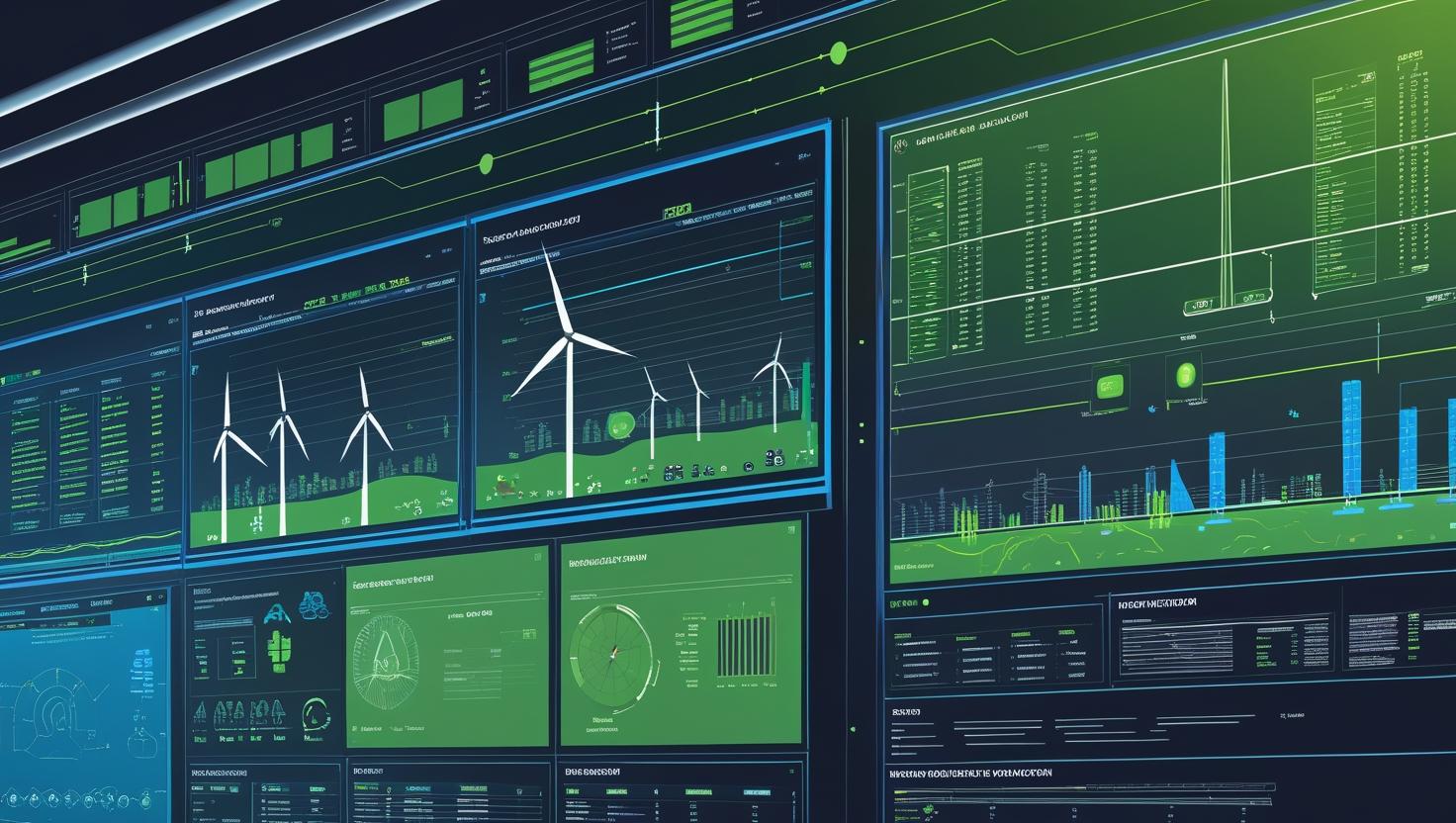As the world races toward a cleaner and more sustainable energy future, renewable energy projects like solar farms, wind parks, and hydroelectric plants are rapidly expanding. However, these energy assets come with their own set of challenges—intermittent generation, harsh environmental conditions, and decentralized installations. To address these issues and optimize performance, many renewable energy operators are turning to SCADA (Supervisory Control and Data Acquisition) systems.
SCADA plays a vital role in monitoring, controlling, and analyzing renewable energy infrastructure, significantly enhancing efficiency, reliability, and uptime. Here’s how.
Centralized Monitoring of Decentralized Assets
Renewable energy projects are often spread across vast, remote areas—especially wind and solar farms. SCADA systems enable centralized, real-time monitoring of these geographically dispersed assets. Operators can remotely access data on power output, system health, weather conditions, and component performance, all from a centralized dashboard.
This level of visibility allows for faster response times to issues and greater situational awareness, reducing the need for constant on-site personnel and costly manual inspections.
Global SCADA in renewable energy market growth
The global SCADA in renewable energy market is estimated to reach USD 3.56 billion by 2030 from USD 1.96 billion in 2025, growing at a CAGR of 12.7% during the forecast period. The increasing installation of solar and wind energy assets and the rising demand for remote monitoring and control fuels the need for advanced SCADA solutions.
As energy networks become more decentralized, SCADA systems provide essential capabilities for managing distributed assets, enhancing grid stability, and minimizing operational downtime. The integration with technologies including IoT, AI, and cloud computing improves real-time data processing, fault identification, and predictive maintenance. Furthermore, favorable government policies and investments in smart grid infrastructure drive the uptake of SCADA systems within the renewable energy industry.
Download PDF Brochure @ https://www.marketsandmarkets.com/pdfdownloadNew.asp?id=18400746

Real-Time Data Collection for Optimal Performance
SCADA systems continuously collect and analyze data from sensors, inverters, turbines, and weather stations. This real-time data flow helps operators understand performance trends, optimize energy production, and adjust system parameters instantly.
For instance, in a solar plant, SCADA can detect underperforming panels, shading issues, or inverter faults. In wind farms, it can adjust turbine blade angles and rotational speeds based on real-time wind conditions to maximize efficiency.
Predictive Maintenance and Reduced Downtime
One of the most powerful features of SCADA in renewable energy is its ability to support predictive maintenance. By monitoring equipment vibrations, temperatures, voltage levels, and operational anomalies, SCADA can flag potential failures before they occur.
This proactive approach reduces unplanned downtime and extends the lifespan of critical assets. For example, an early warning about a degrading bearing in a wind turbine allows operators to schedule repairs during low-demand periods, minimizing disruption and avoiding costly emergency fixes.
Grid Integration and Power Quality Management
Renewables must meet strict grid compliance standards, including frequency regulation and voltage stability. SCADA systems help manage these requirements by ensuring synchronized and stable integration of generated power into the grid.
They provide real-time feedback to adjust generation levels and control reactive power, enhancing power quality and reducing grid disturbances. This is particularly important in hybrid systems where solar, wind, and battery storage interact dynamically.
Alarm Management and Remote Troubleshooting
In high-availability environments, early detection and fast resolution of issues are critical. SCADA systems provide intelligent alarm management, alerting operators immediately when performance metrics fall outside of acceptable thresholds.
Operators can often troubleshoot remotely—adjusting controls, resetting systems, or shutting down faulty components without dispatching field teams. This improves response time, safety, and operational resilience.
Regulatory Compliance and Reporting Automation
Regulatory compliance in the energy sector requires detailed reporting on emissions, efficiency, and operational metrics. SCADA systems automate this process, generating precise, timestamped logs and reports that meet industry standards.
This not only saves administrative time but also ensures accurate tracking of performance indicators that may impact funding, insurance, or government incentives.
Conclusion: SCADA as a Backbone of Smart Renewable Energy
As renewable energy scales globally, the need for intelligent, real-time control systems becomes critical. SCADA is more than just a monitoring tool—it’s the digital backbone that enables smart, efficient, and proactive energy management.
By enhancing uptime, reducing operational costs, and enabling predictive insights, SCADA systems are transforming how wind, solar, and hydro plants operate. In an industry where every kilowatt counts, SCADA ensures that clean energy is not only generated—but delivered efficiently, consistently, and sustainably.
Semiconductor and Electronics Market Research Reports
FAQ
1. What is SCADA and why is it important for renewable energy projects?
SCADA (Supervisory Control and Data Acquisition) is a system that enables real-time monitoring, control, and automation of renewable energy assets like wind turbines, solar panels, and hydroelectric stations. It’s essential for maximizing efficiency, reducing downtime, and optimizing performance—all of which directly affect financial returns.
2. How does SCADA influence ROI for investors?
SCADA enhances ROI by improving asset uptime, enabling predictive maintenance, and optimizing energy output. This leads to higher energy yields and reduced operational costs, which in turn improves profitability and accelerates return on investment.
3. Does SCADA reduce investment risk in renewable energy projects?
Yes. By detecting faults early, preventing unexpected failures, and allowing remote troubleshooting, SCADA significantly lowers operational and technical risks. This risk reduction improves asset reliability, making investments less volatile and more bankable.
4. How does SCADA support regulatory compliance and reporting?
SCADA systems automatically generate accurate, time-stamped reports needed for environmental, performance, and compliance audits. This supports transparency and governance, which are key concerns for institutional and ESG-focused investors.
5. Why do financial institutions prefer SCADA-enabled projects?
Projects with SCADA are viewed as lower risk and better managed, which improves their chances of securing loans, insurance, and subsidies. Financial institutions and lenders often require SCADA as part of due diligence for utility-scale renewable projects.
